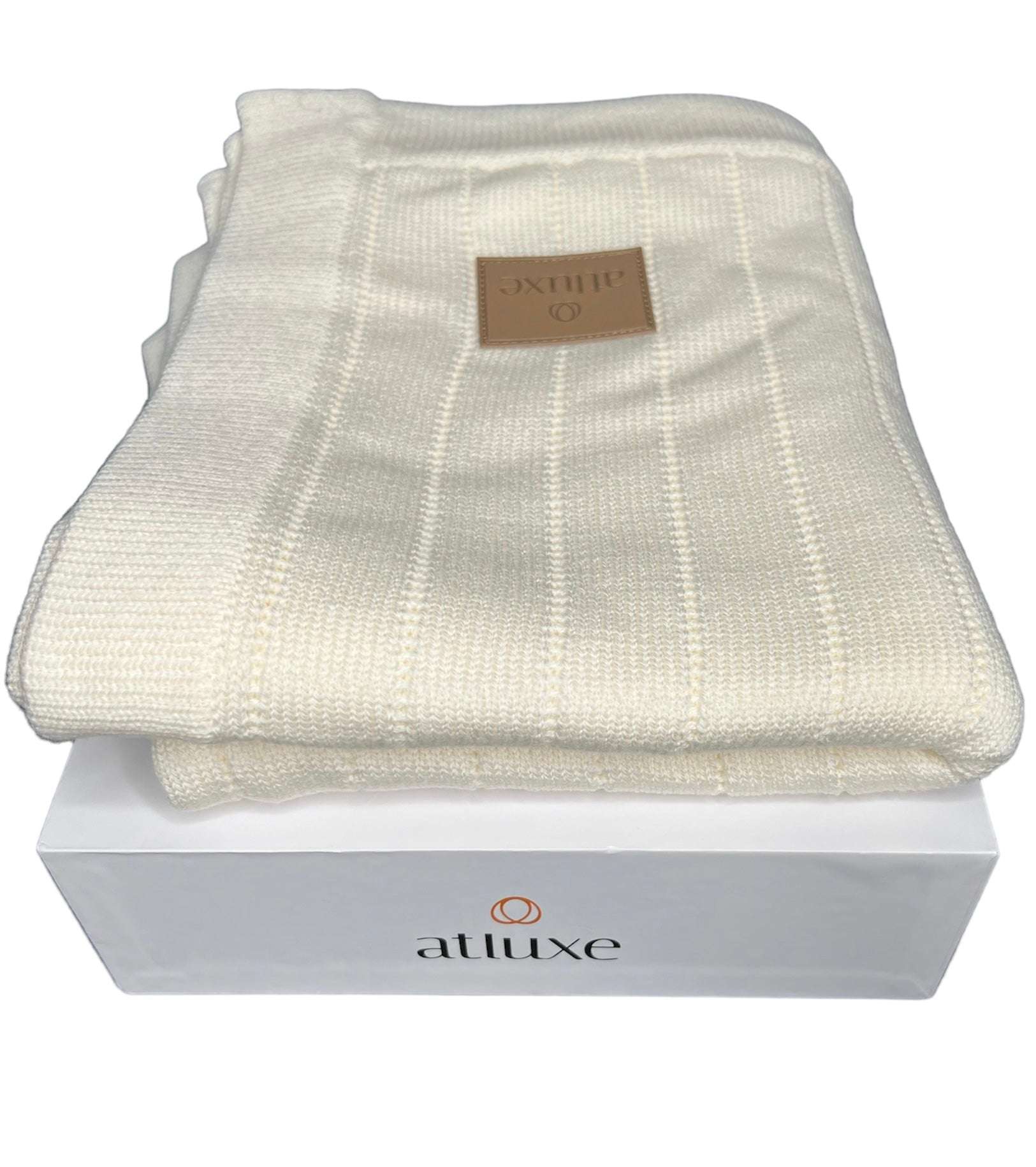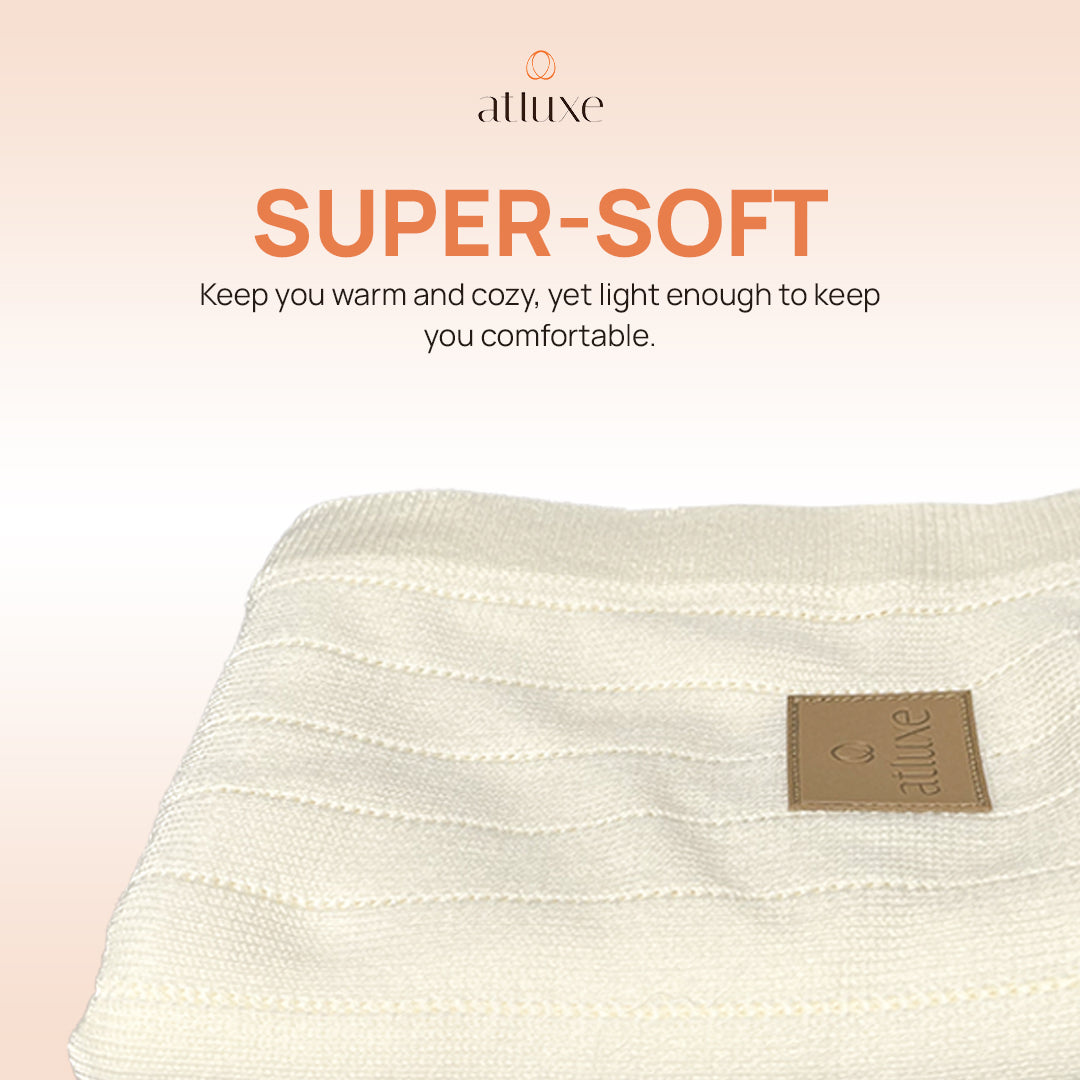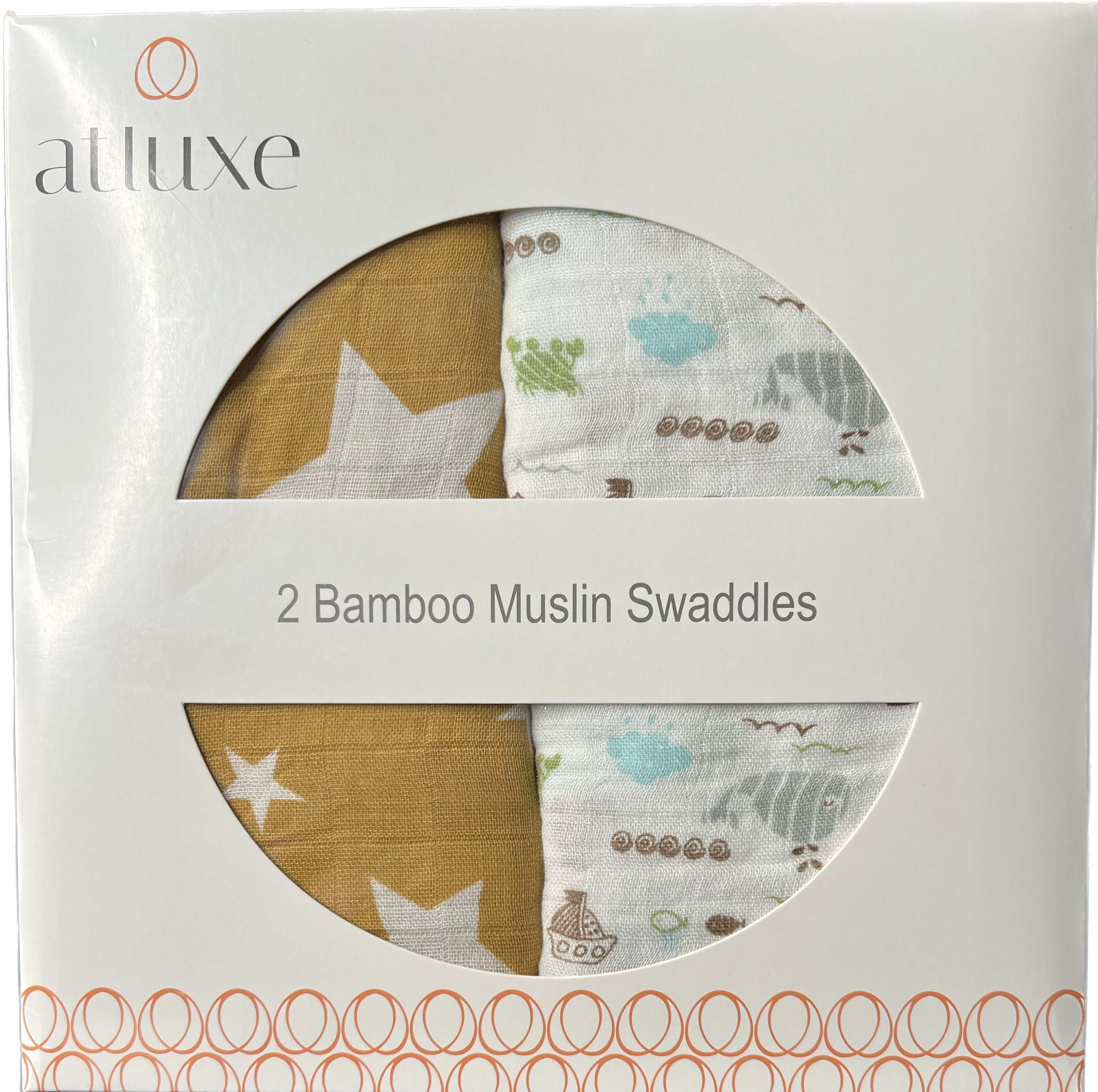Perfect Swaddling: How Tight Should a Swaddle Be?
As a new parent, I remember the countless sleepless nights spent worrying about my baby's comfort and safety. Swaddling quickly became my go-to solution for providing a sense of security and promoting peaceful sleep for my little one. However, like many parents, I often found myself questioning if I was swaddling my baby correctly and how tight the swaddle should be.
Swaddling is a time-honored tradition that has been practiced for generations. It mimics the coziness of the womb and helps soothe babies by preventing startle reflexes and promoting better sleep. But finding the perfect tightness for a swaddle can be a bit perplexing, especially when you want to ensure your baby's safety and comfort.
It's natural to have concerns and questions when it comes to swaddling your precious bundle of joy. That's why in this article, we will delve into the world of perfect swaddling, exploring the ideal tightness of a swaddle and providing expert guidance to help you swaddle your baby confidently, ensuring a worry-free and restful night's sleep.
Key Takeaways:
- Swaddling provides a sense of security and promotes better sleep for babies.
- Choosing the right tightness for a swaddle is crucial for your baby's comfort and safety.
- In this article, we will guide you through step-by-step instructions on how to swaddle your baby correctly.
- The American Academy of Pediatrics offers recommendations on swaddling infants.
- Knowing when to stop swaddling and transition to other sleep arrangements is important.
The Benefits of Swaddling for Your Baby
As a parent, you want nothing but the best for your baby's comfort and well-being. One practice that has stood the test of time is swaddling, which involves wrapping your little one snugly in a swaddle blanket. But why is swaddling so highly recommended for newborns and infants?
Swaddling provides a sense of security and coziness for your baby, mimicking the warm and snug environment of the womb. It helps soothe them and promotes better sleep by preventing the startle reflex, which can often disrupt their slumber. By gently wrapping your baby in a swaddle, you create a calming effect that eases their transition from the womb to the outside world.
The connection between your baby's chest and the swaddle is crucial. Research suggests that swaddling your baby with their arms gently tucked against their chest can help reduce crying and fussiness. It provides a gentle pressure that gives them a feeling of being held, ensuring they feel safe and secure.
"Swaddling helps infants sleep longer and more peacefully, allowing both babies and their parents to get the rest they need."
- Dr. Jane Johnson, Pediatrician
Swaddling also offers other benefits. It can promote self-soothing as your baby learns to find comfort in the familiar sensation of being wrapped. Additionally, a swaddle can prevent accidental scratching, as many newborns have sharp nails that might inadvertently harm their delicate skin.
It is important to note that not all babies enjoy being swaddled, and it's crucial to monitor your little one's cues and preferences. Some babies may feel too confined or restricted by a swaddle, while others find immense comfort in it.
To ensure your baby's safety and comfort, it's recommended to use a swaddle blanket specifically designed for this purpose. These blankets are typically made of soft and breathable materials, allowing proper airflow to prevent overheating.
In the next section, we will guide you through the process of swaddling your baby correctly, ensuring their comfort and helping them sleep peacefully.
How to Swaddle Your Baby Correctly
Swaddling your baby is a wonderful way to create a comfortable and secure environment for their sleep. When done correctly, swaddling can help your little one feel calm and relaxed, leading to better quality sleep. Here are step-by-step instructions on how to swaddle your baby properly:
- Start by laying a swaddle blanket on a flat surface in a diamond shape, with one corner pointing up and one pointing down.
- Fold down the top corner of the blanket to create a straight edge, leaving enough space for your baby's head to comfortably rest.
- Place your baby on their back with their shoulders just above the folded edge of the blanket.
- Take the left corner of the blanket and bring it across your baby's chest, tucking it snugly under their right arm.
- Next, take the bottom corner of the blanket and fold it up over your baby's feet, allowing for some wiggle room for their hips.
- Finally, take the right corner of the blanket and bring it across your baby's chest, securely tucking it under their left side.
Remember, it's important to swaddle your baby firmly, but not too tight. A snug swaddle helps your baby feel safe and secure while allowing for gentle movements. Avoid covering their face or restricting their hips, as this can hinder their natural development.
Swaddling your baby correctly can help promote a peaceful sleep environment and reduce the startle reflex that can disrupt their sleep. It mimics the cozy and secure feeling of being in the womb, offering comfort and reassurance.
Using a swaddle blanket specifically designed for babies can make the swaddling process easier and more effective. These blankets are typically made from soft and breathable materials, providing comfort while ensuring your baby doesn't overheat during sleep.
When swaddling your newborn or infant, always prioritize their safety and follow the guidelines provided by your pediatrician or healthcare professional. As your baby grows and begins to show signs of rolling over, it may be time to transition away from swaddling to avoid any potential risks.
Remember, every baby is different, and it may take some practice to find the swaddling technique that works best for your little one. The key is to create a comfortable and secure sleep environment that promotes their well-being and helps them get the restful sleep they need.
Benefits of Swaddling
Swaddling your baby offers several benefits that contribute to their overall well-being. When swaddled correctly, it can help with:
- Reducing the startle reflex: Swaddling helps prevent sudden arm and leg movements, reducing the risk of waking your baby from sleep.
- Promoting better sleep: The snugness of a swaddle blanket creates a cozy and comforting environment, allowing your baby to sleep more peacefully.
- Providing a sense of security: Swaddling mimics the feeling of being in the womb, providing a familiar and secure sensation for your little one.
- Soothing a fussy baby: The gentle pressure of a swaddle can help calm and soothe a baby, especially during periods of colic or restlessness.
By swaddling your baby correctly, you can help them feel safe, secure, and comfortable during sleep, contributing to their overall development and well-being.
The Right Tightness for a Swaddle
When it comes to swaddling your baby, finding the perfect tightness is key. A properly swaddled baby feels safe and secure, promoting a more restful sleep. However, it's important to strike a balance between a snug swaddle and one that is too tight. Let's explore the right tightness for a swaddle and how to achieve it.
Firstly, it's essential to use a swaddle blanket made of lightweight, breathable fabric. This ensures your baby doesn't overheat while remaining cozy and comfortable. Position your baby on their back with their arms comfortably at their sides. Place the swaddle blanket flat on a surface, making sure it forms a diamond shape.
Now, let's dive into the techniques to achieve the perfect tightness:
- Tuck and secure: Gently wrap one side of the swaddle blanket snugly across your baby's chest, making sure to tuck it underneath their back. Then, fold the bottom point of the diamond-shaped blanket up and over their feet. Finally, bring the other side of the blanket across their chest, tucking it securely under the first side.
- A snug fit: Your baby should feel comfortably snug in the swaddle, mimicking the feeling of being in the womb. However, it's crucial not to swaddle too tightly, as this can restrict their movement and potentially impact healthy hip development.
- Room for movement: Make sure to leave enough room for your baby to move their legs and hips freely. A swaddle that is too tight can increase the risk of hip dysplasia, a condition in which the hip joint is not properly aligned. To promote healthy hip development, ensure your baby's hips can move naturally within the swaddle.
Remember, every baby is different, so finding the right tightness may require some trial and error. Pay attention to your baby's cues and adjust the swaddle's tightness accordingly. It's important to create a snug and secure environment while also prioritizing your baby's comfort and safety.
In the next section, we will explore the guidelines provided by the American Academy of Pediatrics regarding swaddling infants. Let's understand the connection between your baby's chest and the swaddle, as explained by leading pediatric experts.
Guidelines by the American Academy of Pediatrics
When it comes to swaddling infants, it's essential to follow the guidelines set by the American Academy of Pediatrics (AAP). These recommendations are provided by leading pediatric experts and are designed to ensure the safety and well-being of your little one.
"The AAP suggests that swaddling can be beneficial for infants when done correctly, but it should be done in a way that allows the baby's chest to rise and fall comfortably."
As explained by the AAP, swaddling should never hinder the natural movement of the baby's chest. The connection between your baby's chest and the swaddle is crucial for their breathing and overall comfort. The swaddle should be snug enough to create a soothing environment but not too tight that it restricts chest movement.
It's important to note that the AAP also highlights the importance of placing babies on their backs to sleep, as this reduces the risk of sudden infant death syndrome (SIDS). Swaddling should be done in conjunction with safe sleep practices to ensure your baby's well-being throughout their slumber.
By following the guidelines provided by the American Academy of Pediatrics, you can confidently swaddle your infant, knowing that you are providing them with a safe and comforting sleep environment.
| Guidelines by the American Academy of Pediatrics | Summary |
|---|---|
| Swaddling can be beneficial for infants when done correctly. | Ensures comfort and security for the baby. |
| Swaddling should never hinder the baby's chest movement. | Allows natural breathing and reduces discomfort. |
| Place babies on their backs to sleep to reduce the risk of SIDS. | Combines safe sleep practices with swaddling. |
Signs that the Swaddle is Too Tight
When swaddling your newborn, it's important to find the right balance between snugness and discomfort. A swaddle that is too tight can restrict your baby's movement, hinder proper development, and result in unnecessary discomfort. Here are some signs that might indicate your baby's swaddle is too tight:
- Your baby becomes extremely fussy or starts crying inconsolably after being swaddled.
- You notice redness or marks on your baby's skin, especially around their arms, shoulders, or chest.
- Your baby resists the swaddle or tries to wriggle out of it excessively.
- Your baby's breathing seems difficult or labored while swaddled.
- Your baby's hands and feet feel cold or turn blue while swaddled.
- Your baby's sleep patterns are disrupted, and they have trouble settling down.
If you notice any of these signs, it's important to reassess the tightness of your baby's swaddle. A swaddle that is too tight can cause discomfort, restrict proper circulation, and impede your little one's ability to self-soothe. Ensuring that your baby is swaddled correctly and comfortably is crucial for their safety and well-being.
Next, let's take a closer look at how to identify discomfort or potential issues associated with a swaddle that is too tight.
List of signs indicating a swaddle is too tight:
| Signs that the Swaddle is Too Tight |
|---|
| Your baby becomes extremely fussy or starts crying inconsolably after being swaddled. |
| You notice redness or marks on your baby's skin, especially around their arms, shoulders, or chest. |
| Your baby resists the swaddle or tries to wriggle out of it excessively. |
| Your baby's breathing seems difficult or labored while swaddled. |
| Your baby's hands and feet feel cold or turn blue while swaddled. |
| Your baby's sleep patterns are disrupted, and they have trouble settling down. |
When to Stop Swaddling
As your baby grows, it's important to know when to transition from swaddling to other sleep arrangements. While swaddling can provide comfort and security for newborns, there comes a time when it's best to stop swaddling to promote safe sleep and mobility.
One of the key indicators that it may be time to stop swaddling is when your baby starts showing signs of rolling over. Swaddling restricts their movement and can increase the risk of suffocation or hip dysplasia if they aren't able to reposition themselves.
Another factor to consider is if your baby is consistently breaking free from the swaddle. This could be a sign that they're ready to have their arms and legs free while sleeping. It's important to note that a baby who is swaddled too tightly may have difficulty breaking free, leading to frustration and potentially interfering with their sleep.
Additionally, pay attention to your baby's cues. If they seem uncomfortable or restless while swaddled, it could be an indication that the swaddle is too tight and impeding their comfort and sleep quality. Monitoring your baby's chest and the swaddle is crucial to ensure proper breathing and body temperature regulation.
"As the parent, it's important to trust your instincts and also consult with your pediatrician or healthcare provider for guidance on when to stop swaddling your baby."
Remember that each baby is different, and there isn't a specific age or milestone when every baby should stop swaddling. It's a gradual process that depends on your baby's development and needs. The key is to observe your baby's cues and ensure they sleep in a safe and comfortable environment.
When the time comes to stop swaddling, you can transition to other sleep arrangements such as a sleep sack or a wearable blanket. These options provide a cozy and secure environment while allowing your baby's arms and legs to move freely.
By recognizing the signs that your baby is ready to stop swaddling, understanding the impact of a tight swaddle on their comfort and safety, and seeking guidance from healthcare professionals, you can make a smooth and safe transition to new sleep routines that will support your baby's healthy development.
Hip-Healthy Swaddling Techniques
When swaddling your baby, it's important to ensure their hip health and development. Hip dysplasia is a condition where the hip joint doesn't form correctly, and it can be influenced by how we swaddle our infants. By following hip-healthy swaddling techniques, you can promote proper hip development and reduce the risk of hip dysplasia in your newborn or infant.
When swaddling your baby, remember that their hips can move and should have enough room to do so within the swaddle. The goal is to create a snug and secure wrap while allowing for natural hip movement.
Here are a few tips to help you swaddle your baby in a hip-healthy way:
- Choose a swaddle blanket or wrap that allows for proper hip placement. Look for products specifically designed to promote healthy hip development. These blankets typically provide enough room for the legs to be bent and flexed. Avoid straightening your baby's legs too much as this can put undue stress on their hips.
- When wrapping your baby, leave enough space around their hips to allow for movement. A good rule of thumb is to position the swaddle below the hips so that the legs can move naturally.
- Ensure that the swaddle is snug around your baby's chest and arms, but don't wrap it too tightly around their hips and legs. Avoid overconstriction that may restrict hip movement and blood flow.
- Monitor your baby's comfort and mobility while swaddled. Observe their hip positioning and ensure they can freely flex and move their legs.
By maintaining these hip-healthy swaddling techniques, you can foster proper hip development and minimize the risk of hip dysplasia. Remember, always consult with your pediatrician for personalized advice and tips on swaddling your specific infant.
Now, let's take a look at a quote from Dr. Jane Miller, a renowned pediatrician specializing in infant hip health:
"Promoting hip-healthy swaddling is crucial during a baby's early stages of development. By allowing for hip movement and using appropriate swaddle techniques, we can significantly reduce the risk of hip dysplasia and support optimal hip development."
- Dr. Jane Miller, Pediatrician
Discover how to wrap your baby snuggly while ensuring their hips have room to move.
Conclusion
Swaddling is a valuable technique for ensuring the safe and comfortable sleep of your baby. Throughout this article, we have explored the benefits of swaddling, the correct way to swaddle your baby, and the ideal tightness for a swaddle.
Remember that every baby is unique, so it is important to adjust the tightness of the swaddle according to your baby's needs. A snug and secure swaddle can help your little one feel calm, secure, and cozy, promoting a restful night's sleep.
However, it is crucial to be mindful of the signs of a swaddle that is too tight. If your baby shows signs of discomfort or if the swaddle restricts their movement, it is important to make adjustments to ensure their safety and well-being.
Always consult with your pediatrician or caregiver for personalized advice on swaddling techniques and to address any concerns you may have. By swaddling your baby safely and correctly, you can provide them with the comfort and security they need for a peaceful sleep experience.
FAQ
How tight should a swaddle be?
The swaddle should be snug but not too tight. It should allow your baby's chest to rise and fall comfortably while sleeping. Avoid wrapping the swaddle too tightly, as it can restrict your baby's movement and increase the risk of suffocation.
What are the benefits of swaddling for my baby?
Swaddling provides a sense of security and comfort for your baby, mimicking the cozy environment of the womb. It can soothe a fussy baby, promote better sleep patterns, and help your little one feel settled and calm.
How do I swaddle my baby correctly?
To swaddle your baby correctly, lay a swaddle blanket on a flat surface and fold one corner down. Place your baby on their back with their head on the folded corner. Wrap one side of the blanket snugly across your baby's chest and tuck it under their body. Then, bring the bottom of the blanket up and over their feet, tucking it into the top of the swaddle. Finally, wrap the other side of the blanket across their chest and tuck it securely.
How can I achieve the right tightness for a swaddle?
The swaddle should be tight enough to prevent your baby from wriggling out of it, but not so tight that it restricts their movement or breathing. As a good rule of thumb, you should be able to fit two to three fingers between the swaddle and your baby's chest. Tuck the swaddle securely, ensuring it doesn't come loose during sleep.
What guidelines does the American Academy of Pediatrics provide for swaddling infants?
The American Academy of Pediatrics recommends swaddling as a safe sleep practice as long as it is done correctly. They advise parents to place babies on their backs to sleep and ensure that the swaddle is not too tight around the chest. It's important to be aware of the baby's legs, hips, and the ability to move their hips freely to reduce the risk of hip dysplasia.
What are the signs that a swaddle is too tight?
If your baby appears uncomfortable, restless, or is excessively fussy while swaddled, it might indicate that the swaddle is too tight. Watch out for any signs of restricted movement or difficulty breathing. Adjust the tightness or consider alternative sleep arrangements to ensure your baby's safety and comfort.
When should I stop swaddling my baby?
You should stop swaddling your baby once they show signs of rolling over independently. Swaddling can restrict their movement and increase the risk of Sudden Infant Death Syndrome (SIDS). It's important to transition your baby to other sleep arrangements, such as a sleep sack or a loosely tucked blanket, while ensuring they can still move their hips freely.
How can I practice hip-healthy swaddling?
To promote proper hip development and reduce the risk of hip dysplasia, ensure that your baby's hips can move and that the swaddle allows for enough room. Avoid wrapping your baby's legs too tightly and allow their legs to remain in a natural position with a slight bend at the hips. This will help support healthy hip development while still providing warmth and coziness.
What are the key takeaways for swaddling my baby safely?
Swaddling can be a beneficial and soothing practice for your baby's sleep, but it's important to do it correctly and safely. Remember that every baby is different, so adjust the tightness of the swaddle according to your baby's needs. Always consult with your pediatrician or caregiver for personalized advice and recommendations specific to your baby's sleep habits and development.








Leave a comment